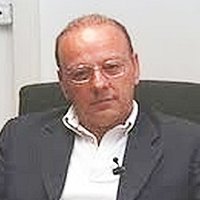Bacteremia with the Triad Osteomyelitis, Deep Vein Thrombosis, and Pulmonary Septic Emboli in Pediatric Age: A Case Report
Published on: 25th October, 2025
Acute osteomyelitis (AOM) is defined as an inflammation of the bone secondary to infection. Among the most common complications of AOM is the development of a periosteal abscess and the extension of the focus locally to muscle (pyomyositis) and/or joint (osteoarthritis). However, complications with much lower incidence have been described, including deep vein thrombosis (DVT) and septic pulmonary embolisms (SPE), mainly associated with S. aureus infections. The AOM + DVT + ESP triad is a fairly uncommon entity in the pediatric population; however, if it is not diagnosed and treated in time, it implies a high morbidity and mortality. Treatment, which must be early and aggressive, includes targeted antibiotic therapy, anticoagulation, and focused control surgery. In this article, we describe the case of a 14-year-old boy with disseminated staphylococcal infection associated with the triad AOM+ DVT + SPE.
A Temporal Forecasting Framework for Palm Crease Analysis: A Phenomenological Approach
Published on: 24th September, 2025
Recent forensic studies, including investigations into the relationship between palmar “lifeline” length and mortality, highlight both the biological reality of palm creases and the limitations of associating them directly with lifespan. Palmar creases are anatomical structures formed between the 12th and 17th weeks of gestation, present at birth, and evolving in visibility across the lifespan [1-3]. Building on this foundation, this paper introduces a temporal forecasting framework that interprets palm crease geometry as a structured map of personal life transitions.Unlike traditional palmistry or simple crease-length studies, this model produces month–year markers divided into six-month periods beginning at age 5, identifying windows of highest probability (Yog) for major transitions such as relational changes, career shifts, or health events. Accuracy increases when temporal markers align across multiple creases, supporting probabilistic inference of event domains.The model has been refined over 40 years of application with thousands of individuals, incorporating both retrospective validation and prospective feedback. This long-term iterative process provides an unusually strict validation regime rarely observed in unconventional forecasting frameworks. While bounded in scope, its reproducibility, falsifiability, and temporal granularity make it a promising subject for forensic inquiry. Beyond forensic applications, the model provides a structured way of engaging with unbounded human problems — contextual life transitions that resist deterministic prediction yet display measurable temporal regularities. Unlike DNA-based or survey-based models, which often require invasive sampling or detailed personal information, this framework is non-invasive, requires only palm photographs and month–year of birth, and can forecast both past and future major life transitions (changes) of any individual without additional inputs.
Stature Estimation from Regression Analysis of Craniofacial Anthropometry in an Indian Population
Published on: 24th September, 2025
Background: Stature is a key biological characteristic for identifying individuals, particularly in forensic investigations. While long bones are traditionally used for stature estimation due to their strong correlation with height, craniofacial structures offer an alternative in cases where only partial remains are available, given their durability and relative preservation.Objectives: This study aimed to evaluate the relationship between craniofacial anthropometric parameters and stature, and to assess their usefulness for stature estimation in the Indian population.Methods: Twelve craniofacial parameters were measured and analyzed using regression analysis, the preferred statistical method for estimating stature from skeletal dimensions. The study focused on assessing the strength of correlation between these craniofacial measurements and actual stature.Results: All twelve craniofacial parameters demonstrated a positive correlation with stature, indicating their potential utility in forensic contexts where only craniofacial remains are present. Although long bones remain the gold standard, these findings provide support for the supplementary use of craniofacial data.Conclusion: Craniofacial anthropometry can serve as a reliable method for estimating stature, especially in scenarios where long bones are unavailable. This study contributes valuable data to the limited literature on this topic in the Indian population and aligns with existing global research supporting the role of craniofacial structures in forensic identification.
Prevalence of West Nile Virus among Sudanese Participants in Gezira State
Published on: 22nd September, 2025
West Nile virus (WNV), a mosquito-borne pathogen belonging to the Flavivirus genus (family Flaviviridae), is primarily responsible for West Nile fever. In rare cases (< 1% of infections), it can lead to West Nile neuroinvasive disease (WNND), which carries an approximate fatality rate of 10%. This cross-sectional study aimed to assess WNV exposure among residents of Gezira State, Sudan, from 2019 to 2022. A total of 400 participants were included, with 5 mL of blood collected from each—2 mL in an EDTA tube and 3 mL in a plain container. Plasma and serum were separated via centrifugation, and WNV-specific IgG and IgM antibodies were detected using ELISA. The results revealed that 62.25% (249 cases) tested positive for WNV-IgG antibodies, while 37.75% (151 cases) were negative. None of the samples showed detectable WNV-IgM antibodies. Statistical analysis indicated no significant association between WNV-IgG seropositivity and age or gender (p = 0.060 and p = 0.117, respectively). However, significant correlations were observed with marital status and education level (p < 0.05). The study highlights the need for ongoing surveillance of WNV and other vector-borne diseases in the region to identify active West Nile Virus infections. Public health efforts should prioritize mosquito control measures, community education, and awareness campaigns about WNV symptoms and prevention.
Clinical Performance of the Erba H7100 Hematology Analyzer: Focus on Reticulocytes
Published on: 18th September, 2025
This study comparatively evaluated the analytical performance of the Erba H7100 hematology analyzer against the Siemens Advia 2120i and Beckman Coulter DXH 900, using 243 patient samples. The study assessed the agreement and linear relationship across 14 key hematological parameters in whole blood, employing statistical methods that included mean bias, standard deviation of the difference, Pearson’s correlation, and coefficient of determination. Additionally, reticulocyte counts were analyzed in 27 samples for Erba H7100 vs. Advia 2120i and 53 samples for Erba H7100 vs. DXH 900, revealing exceptional agreement with high Pearson’s r and r-squared values. The performance of the Erba H7100 and DXH 900 in analyzing ascitic, cerebrospinal, and bronchial wash fluids was also evaluated. Notably, the Advia 2120i analyzer exhibited discrepancies in mean corpuscular volume (MCV) and monocyte counts (Mon#). Conversely, the Erba H7100 showed better agreement with the DXH 900 for MCV and Mon# in whole blood. In fluid samples, Erba H7100 and DXH 900 demonstrated a strong correlation with Microscopy in determining Neutrophil % and Lymphocyte % values. Strong linear correlations were observed for most parameters in whole blood, with reticulocyte counts showing near-perfect correlation. This study underscores the importance of rigorous validation and potential platform-specific reference intervals to ensure accurate and reliable hematological testing, emphasizing the need for standardized methodologies in clinical laboratories.
Clinical Performance of the Erba H7100 Hematology Analyzer: Focus on Reticulocytes
Published on: 18th September, 2025
This study comparatively evaluated the analytical performance of the Erba H7100 hematology analyzer against the Siemens Advia 2120i and Beckman Coulter DXH 900, using 243 patient samples. The study assessed the agreement and linear relationship across 14 key hematological parameters in whole blood, employing statistical methods that included mean bias, standard deviation of the difference, Pearson’s correlation, and coefficient of determination. Additionally, reticulocyte counts were analyzed in 27 samples for Erba H7100 vs. Advia 2120i and 53 samples for Erba H7100 vs. DXH 900, revealing exceptional agreement with high Pearson’s r and r-squared values. The performance of the Erba H7100 and DXH 900 in analyzing ascitic, cerebrospinal, and bronchial wash fluids was also evaluated. Notably, the Advia 2120i analyzer exhibited discrepancies in mean corpuscular volume (MCV) and monocyte counts (Mon#). Conversely, the Erba H7100 showed better agreement with the DXH 900 for MCV and Mon# in whole blood. In fluid samples, Erba H7100 and DXH 900 demonstrated a strong correlation with Microscopy in determining Neutrophil % and Lymphocyte % values. Strong linear correlations were observed for most parameters in whole blood, with reticulocyte counts showing near-perfect correlation. This study underscores the importance of rigorous validation and potential platform-specific reference intervals to ensure accurate and reliable hematological testing, emphasizing the need for standardized methodologies in clinical laboratories.
Analysis of Polymers and Organic GSR from 3D Printed Firearm using Direct Analysis in Real-time Mass Spectrometry (DART-MS)
Published on: 19th September, 2025
Several methods were developed in lab work, including forensic analysis of polymers & organic GSR from 3D printed firearms using Direct Analysis in Real Time Mass Spectrometry (DART-MS) for a wide variety of applications. Since its introduction, DART-MS has been studied for forensic use in areas including drug detection, gunshot residue, printer inks, and even insect identification. We used DART-MS to characterize the polymer evidence left behind by a 3D-printed firearm on cartridge cases, bullets, and the receiving surface. According to James Cizdziel, “There is concern with these 3D printed guns because they have no serial numbers. The fire gun barrels made with Acrylonitrile Butadiene Styrene (ABS), Polylactic Acid, PETG, Chlorinated Polyethylene (CPE) & Nylon were examined by DART-MS. The resulting cartridge cases, bullets & GSR are examined by Direct Analysis of Real Time-Mass Spectrometry”. It successfully detects and identifies the traces of polymer and organic GSR compounds on the bullets, cartridge cases, and in GSR collected from clothing. While detecting polymer in the trace evidence was challenging, DART-MS obtained clear spectra that matched the plastic from the gun from clothing used as a backdrop for test fire. According to the study, DART-MS readily detected three chemicals commonly found in firearm propellants (ethyl centralite, methyl centralite, and diphenylamine) on the bullet and cartridge case, as well as in the solvent wash of the GSR stub. The resulting cartridge cases, bullets, and gunshot residue (GSR) were examined by direct analysis in real time – mass spectrometry (DART-MS). High-resolution mass spectra detected polymer from the gun barrel on bullets and cartridge casings for a 0.38 special Caliber gun and, to a lesser extent, for a 0.22 Caliber 3D-printed gun. This study states that analysis of firearm trace evidence using DART-MS needs more attention & that the technique may be particularly useful for investigating crimes involving 3D-printed guns. I'm writing my review paper on this topic because it's important for addressing challenges related to 3D-printed firearms. These weapons often don't have traditional serial numbers, making them difficult to trace. However, by analyzing polymer residues left on bullets, cartridge cases, or nearby surfaces, investigators can potentially identify the firearm used. The unique chemical makeup of polymers used in 3D printing can help ink the residue back to a specific gun or even a particular 3D printer model. This study states that analysis of firearm trace evidence using DART-MS needs more attention & that the technique may be particularly useful for investigating crimes involving 3D-printed guns.
Unlocking Ethiopia’s Renewable Energy Potential: Pathways into a Sustainable Future
Published on: 16th September, 2025
The global energy transition necessitates a shift to renewables to mitigate climate change and ensure energy security. For developing nations like Ethiopia, this presents a critical opportunity to leverage abundant domestic resources for suitable development. Ethiopia, with over 45% of its population lacking electricity, faces a paradox of energy poverty and immense renewable potential. Its grid is 90% hydropower-dependent, making it vulnerable to climate-induced droughts. Previous studies have individually assessed Ethiopia’s hydropower, geothermal, wind, and solar potential. However, a holistic analysis integrating all sectors with current policy and investment frameworks is needed. This article provides a comprehensive analysis of Ethiopia’s renewable energy landscape. We synthesize the potential of hydropower, geothermal, wind, and solar resources, and propose integrated policy and investment pathways to achieve universal electrification by 2030 and position Ethiopia as a regional renewable energy exporter.
Seasonal Influenza in Morocco
Published on: 18th September, 2025
Influenza is an acute respiratory infection caused by influenza viruses of the Orthomyxoviridae family. Influenza virus cell culture consists of inoculating viral isolates on an MDCK cell layer. The objective of this work is to describe the role of cell culture in influenza virus subtyping during the 2023/2024 influenza epidemic at the Mohammed V Military Teaching Hospital - Rabat.This is a prospective descriptive study carried out at the Virology laboratory of the HMIMV in Rabat, during the 2023/2024 influenza epidemic season (between October and May). It included all samples from patients positive for influenza viruses by the respiratory PCR test. Of the 86 samples positive by PCR, 36 were selected for viral culture.Cell culture allowed the isolation of the virus from the original sample, thus producing a sufficient quantity for further antigenic and genetic characterization, allowing the subtyping of circulating strains.The results showed a predominance of influenza A(H3N2) with 35 cases out of 36 compared to influenza A(H1N1) pdm09 with only 1 case.Cell culture also makes it possible to assess the sensitivity of isolated viral strains to antiviral molecules and to detect the emergence of resistance. Thus, it plays an important role in virological surveillance and in alerting to the event of the appearance of new viruses.
A Case Report of Hepatic Rupture Associated with Hellp Syndrome
Published on: 17th September, 2025
HELLP syndrome is a severe variant of preeclampsia, characterized by hemolysis, elevated liver enzymes, and low platelet count, often resulting in significant maternal and fetal morbidity. One of its most catastrophic but rare complications is hepatic rupture, typically secondary to the development of a subcapsular liver hematoma. This case report describes a patient with hepatic rupture associated with HELLP syndrome, managed at the Leonor Mendes de Barros Maternity Hospital in São Paulo.




